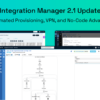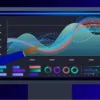For many of our customers, digital transformation is not only a strategy for success but also for survival. Remaining competitive requires continuous innovation and the ability to launch new digital services quickly and frequently. To accomplish this, IT must provide the business with a flexible application landscape, highly skilled resources, and an operating model that supports innovation and reuse.
Building this new capability involves more than just people, process, and technology; it also requires a fundamental cultural change within the organization. As daunting as this may seem, the good news is that it is possible for a company to launch its digital transformation quickly and deliver it in manageable increments. In this blog post, we will share our blueprint for effectively bootstrapping your digital transformation based on the learnings from working with our most successful customers.
Why digitally transform?
Several of our customers view their digital transformation strategy as moving from a vendor-centric environment to an API-centric one. In this context, each new integration project provides an opportunity to connect systems via APIs instead of connecting with these systems directly. This removes dependence on the system vendors and provides the organization with greater speed and flexibility for launching new products and services. It also enables the organization to add or remove vendor systems with ease.
Start small
Planning can occur on an incremental basis, focusing on what can be gained by delivering individual projects with the API-led approach. You will want to strategize on which digital transformation gains you want to achieve from each project. Considerations include:
Project ROI. Will the project solve a critical problem and/or deliver sufficient business value? The project must be profitable since, among other things, it is funding a portion of your digital transformation initiative.
Vendor Independence. Is vendor independence a priority? If so, you will want to choose a project that provides an opportunity to develop reusable APIs that simplify access to key systems such as the banking core or CRM.
Reusable Assets. Or, is the priority to develop a library of reusable assets that will speed up delivery and reduce costs for future projects? In this case, choose a project that will generate reusable APIs around common services and business logic such as customer, account, transaction, loan, etc.
The key is not to worry about addressing all of your digital transformation goals at once. If you choose a specific set of digital transformation priorities with one project, you can always address other priorities with the next one.
API-led best practices
Most of our customers have embraced the API-led approach and have leveraged ModusBox to coach them on API-led best practices. With the API-led approach, the goal is not only to deliver a project but also to produce reusable services that are accessed through REST APIs. The APIs are organized in three distinct layers:
System APIs abstract data from the core systems and data stores to make them available for developers in a secure and governed manner. Instead of coding directly to those systems, developers can simply call the APIs that expose data from those systems.
Process APIs leverage a subset of the System APIs to describe components of your business (for example, Account, Customer, Loan, Transaction) and handle process orchestration.
Experience APIs leverage a subset of the Process APIs to format and present your business process to targeted devices or experiences such as web or mobile applications.
All APIs are built following a specific set of guidelines so that they are modular, reusable, discoverable, and enabled for self-service. Any APIs built for one project can be reused for others, resulting in tremendous savings in cost and effort.
Build the factory
We refer to the first project as the “Build the Factory” phase because this is typically where the team is enabled, the first set of reusable APIs are produced, and subsequent projects are identified that can immediately leverage the reusable APIs. For the first project, customers typically request that ModusBox deliver the foundational components and coach their teams through the following co-delivery steps:
| Task | Staffing |
| Stand Up the platform | Assign to ModusBox. If this has been completed, ModusBox will review the setup. |
| Architecture | Assign to ModusBox. The client team participates in design review sessions with a ModusBox Architect. |
| Build System APIs | Assign to ModusBox as these tend to require significant discovery, collaboration with SMEs, and implementation effort. |
| Build Process APIs | Assign to customer developers and ModusBox will perform best practices coaching and review. |
| Build Experience APIs | Assign to customer developers and ModusBox will perform best practices coaching and review. |
This approach has enabled our customers to complete the first critical project and build a foundational set of reusable APIs. One customer successfully followed this process with only two mid-level developers and a single program lead.
Run the factory
For subsequent projects, the customer takes ownership of project delivery and assigns the key tasks directly to their resources while leveraging ModusBox for coaching and technical oversite as needed. Customers typically staff these as follows:
| Task | Staffing |
| Maintain the platform | The customer’s team typically manages this with some occasional support or advice from ModusBox resources. |
| Architecture | The customer takes the lead on architecting subsequent projects but may engage ModusBox for design reviews to validate that best practices are followed. |
| Build or Extend APIs (System, Process, and Experience APIs) | The customer takes the lead on building the different APIs though initially, ModusBox SMEs may review to ensure that best practices are followed. |
For subsequent projects, it is important to make sure that the team does not compromise API-led best practices to accelerate short-term schedule targets. The best practices enable reuse, which in turn facilitates increasingly faster and cheaper project delivery. It is typically during this phase that customers begin to realize the value of reusable APIs and experience tremendous gains in productivity, schedules, and budget. For this reason, we refer to this as the “Run the Factory” phase.
It is also vital that customers exploit these gains by organizing business stakeholders, team members, and their broader network of partners and developers around a new operating model. This may include initiatives such as publishing some of the APIs on a developer portal to facilitate the rapid development of products and services. It may mean coaching partners and developers to ask for available APIs instead of integrating directly with the customer’s systems. At some point, this will require more rigorous governance and processes, but by then, customers will be beyond the bootstrapping phase and will be dealing with the kind of challenges they want to have.
Getting started
If you would like to learn more about how we’ve helped financial institutions gain independence from the banking core through digital transformation initiatives, start by watching the webinar we did with Kevin Guenthner from Stockman Bank of Montana. Kevin shares how he succeeded in championing a true digital transformation strategy, creating an agile-minded organization, lessons about culture change, the benefits of a truly unified integration platform, and other recommendations for leaders in the financial industry.
You can also download a case study about how we helped Solarity Credit Union from Washington state turn a single use case into a digital transformation strategy that reduced its core integration work by nearly 18 months.
As always, we would love to start a conversation about how our team can help you digitally transform your organization.






